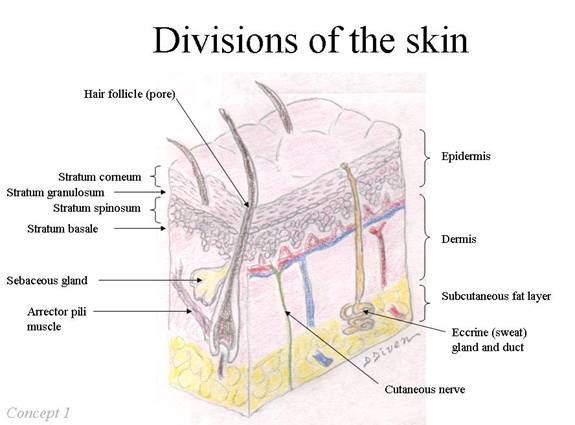Anatomy of the Skin
Epidermis
The epidermis is the most superficial layer of the skin and provides the first barrier of protection from the invasion of substances into the body.
The epidermis is subdivided into five layers or strata:
Keratizination
The principal cells of the epidermis are keratinocytes. The basal cells or "stem cells" of the epidermis are undifferentiated, proliferating cells that migrate upwards through all the five layers in a process known as keratinization. It takes about 30 days for the cells to migrate from the basal layer to cross the stratum corneum where they are finally shed.
Thickness
Epidermis varies in thickness throughout the body depending mainly on frictional forces and is thickest on the palms of the hands and soles of the feet, and thinnest in the face (eyelids) and genitalia.
Dermis and Subcutaneous Fat
The dermis is a tough but elastic support structure that houses nerves, blood vessels, lymphatics, and cutaneous appendages (pilosebaceous units, eccrine and apocrine sweat glands).
It is thicker (averages 1 to 4 mm) than the epidermis which is about as thin as piece of paper. The dermis varies in thickness. It is very thick on the back (almost 1 cm); it is very thin on the eyelid.
The dermis has two main zones, the papillary dermis and the reticular dermis.
The subcutaneous fat is an important layer and plays a role in shock absorption, energy storage, and maintenance of body heat.
Other cellular components of the epidermis
Melanocytes are dendritic, pigment-producing cells located in the basal layer. The pigment they manufacture is called melanin.
Langerhans cells are dendritic cells derived from the bone marrow in the stratum spinosum that have an immunologic function. They are identical to tissue macrophages and present antigens to lymphocytes.
